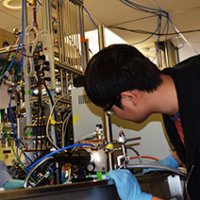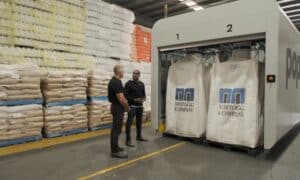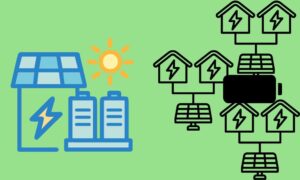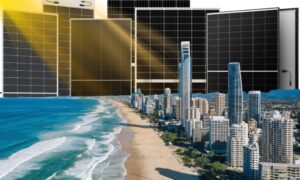Stanford researchers have discovered that solar cells made from common metal oxides such as rust can convert photon into electrons more efficiently than their silicon counterparts – in a particular scenario.
It was a bit of a “huh?” moment and a breakthrough they say that could lead to cheaper solar energy storage.
The work, reported in the journal Energy & Environmental Science, is based on water splitting technology; whereby solar power is harnessed during daylight to separate H2O’s hydrogen and store it as an energy source for use overnight.
Despite promising results in the field – mainly on the very small, nano-scale, using the sun’s energy to split water isn’t as practical as it sounds. A big problem is that silicon solar cells only convert visible and ultraviolet light into energy, and actually become less efficient as infrared light beats down on them; creating heat.
Metal oxide solar cells were thought to suffer the same problem until the Stanford team began their experiments of splitting water at varied temperatures using three different materials: bismuth vanadium oxide, titanium oxide and iron oxide, or rust. The results were remarkable.
As the metal oxides grew hotter, the rate at which they converted photons into electrons also increased, the opposite of what the researchers expected.
“Our results show that heating up metal oxides with sunlight can double the rate of hydrogen generation, said Xiaofei Ye, researcher and co-lead author of the paper.
“In all three cases we observed increased production of hydrogen and oxygen at higher temperatures,” said Liming Zhang, a postdoctoral scholar and also co-lead author. “We realized that the higher temperatures were enhancing the carrier mobility of these cells – the speed at which electrons can pass through the metal oxides.”
Bismuth vanadium oxide was more efficient than iron oxide at solar conversion, but the results mean other oxides previously thought impractical for use as solar material can be re-examined.
And by concentrating solar radiation in the form of heat, the full potential of metal oxides can be harnessed, according to graduate student and team member Andrey Poletayev.
“You don’t have to add energy from an outside source,” he said. “You can do it for free by concentrating solar radiation, either through a magnifying lens or parabolic mirrors.”
This hasn’t been the first project to examine rust’s potential relating to energy storage. In 2012, University of California (USC) researchers developed a deep cycle battery that uses the chemical energy generated by the oxidation of iron plates.














































